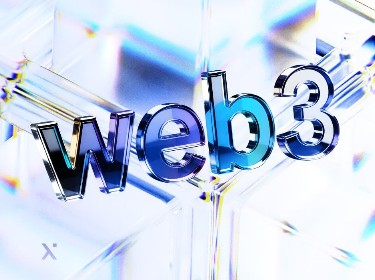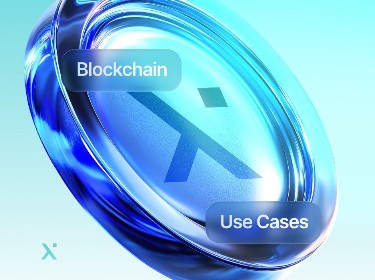Blockchain has made its way into nearly every industry. However, many businesses still struggle to integrate this technology into their existing systems properly and often run into hurdles along the way.
The global blockchain market is projected to reach $248.9 billion by 2029, up from $20.1 billion in 2024, which highlights just how quickly the technology is catching on.
Even though blockchain is no longer the latest buzzword and is increasingly seen as a valuable tool for boosting efficiency, many companies still struggle with integrating it into their existing systems — the technology can be indeed quite complex, which makes it easy to encounter pitfalls.
Fortunately, with over 11 years of experience in blockchain development, we have mastered the intricacies of the tech and can help you implement it wisely and get the most out of its capabilities.
In this article, we will share practical tips on how to integrate blockchain into your processes as well as outline key aspects and risks to be mindful of.
Factors to consider BEFORE implementing blockchain
![]()
Confucius wisely said “By failing to prepare, you are preparing to fail” and there is a lot of truth to that. If you agree with this thinking, it is crucial to take a moment to consider some important factors before you jump into integrating blockchain into your workflows. A little preparation can make all the difference in achieving better outcomes for your workflows.
Define the problem you want to solve
As paradoxical as it might sound, before diving into blockchain, we recommend determining whether you actually need it.
Blockchain is not a one-size-fits-all solution so it is important to consider if your specific problem genuinely requires its unique features like decentralized control, transparency, or enhanced security. If the answer is yes, then blockchain could be the right tool for the job. If not, a simpler technology might be a more efficient choice.
To help you think this through, here are some questions businesses in different industries might ask themselves.
Supply chain. Are we struggling with visibility and transparency in our supply chain? Would real-time tracking of goods across various partners make a difference?
- Considering the broader landscape of industries, we might also ask: Could blockchain enhance the provenance and authenticity of goods, addressing concerns beyond just tracking? For instance, blockchain in art could revolutionize how we track the origin and ownership history of valuable artworks and collectibles, combating counterfeiting in the art market. Similarly, for ethical sourcing in various industries, could blockchain provide verifiable trails?
Retail. Are counterfeit products or complicated loyalty programs causing trouble? How might a decentralized system enhance trust and simplify product tracking?
- Thinking about evolving digital landscapes, we could also explore: Beyond physical product tracking, how can blockchain reshape digital ownership and online experiences in retail? Blockchain in gaming immediately comes to mind, where players could truly own in-game assets and trade them freely and securely, creating new economies around gaming. Furthermore, in the realm of digital content, could blockchain offer new models for creators? This leads us to consider blockchain in journalism, where content provenance and verifiable timestamps become crucial for combating misinformation and establishing trust in news sources.
Blockchain in Energy: Key Benefits and Use Cases
Blockchain for Digital Identity: Overview, Guide & Facts
How to Hire a Blockchain Development Team: Top 10 Facts to Consider
Healthcare. Do we need a secure way to share sensitive patient information across different healthcare providers? Would blockchain enhance the security and reliability of medical records?
- Expanding our perspective beyond data security, we should also consider: How else could blockchain impact societal well-being and public good through decentralized systems? Blockchain in charity offers compelling possibilities for transparent donation tracking and efficient aid distribution, ensuring funds reach intended recipients with greater accountability. Could this same transparency model be applied to other sectors needing public trust?
Real estate. Are slow and error-prone property transactions a concern? What if a blockchain ledger could streamline the process and reduce fraud risks?
- Looking beyond transactional efficiency, we might ask: Can blockchain contribute to sustainability and responsible resource management? This brings blockchain in energy into focus. Could blockchain facilitate decentralized energy grids, enabling peer-to-peer energy trading and promoting the adoption of renewable energy sources with transparent verification of origin and consumption? Could it incentivize and track green initiatives in real estate and other sectors?
FinTech. Are cross-border transactions inefficient and costly? What improvements might blockchain deliver in terms of reducing intermediary fees and enhancing payment security?
- Finally, considering the intersection of finance and culture, we could ponder: How can blockchain democratize access and empower creators and communities in novel ways? We see potential for new forms of art investment, fractional ownership, and direct patronage of artists through NFTs and decentralized marketplaces. This model of direct support and community engagement could be extended to various creative and social endeavors, reinforcing the potential of blockchain to foster new economic and social structures beyond traditional finance.
Get to grips with the technology
Blockchain is a complex and multifaceted technology so it is essential to take the time to understand the basics — how it works, the different types (such as public, private, and consortium blockchains), and how consensus mechanisms operate. With this knowledge, you will be able to make more informed decisions and avoid potential pitfalls.
However, if you are not deeply familiar with tech, it might be helpful to bring in someone who is. Blockchain can be pretty complicated and having an expert on your side can make the whole process a lot easier and help you avoid common pitfalls.
Our blockchain consultants will help you grasp the technology and craft a straightforward plan for successful implementation. Reach out to us now and let’s innovate together
Think about scalability from the start
Consider whether the blockchain solution you choose can handle a growing number of transactions as your business expands without slowing down. You definitely don’t want a system that bottlenecks your operations as it scales — so be sure to evaluate the scalability options and how they comply with your long-term business goals.
Assess transaction speed capabilities of various blockchains
When picking a blockchain platform for your future project, it is worth checking its transactions per second capacity, which shows how many transactions the blockchain can handle each second. For example, Ethereum manages about 12-15 TPS, Bitcoin around 6-8 TPS, while Solana can handle over 65,000 TPS.
Don’t overlook security
Blockchain is often praised for its security but that doesn’t mean it is foolproof.
Security should be a top priority from the very beginning of your project. Think about the measures you will need to protect your data and assets such as encryption, secure identity management, and safeguards against specific threats like 51% attacks.
Always keep in mind that a security breach can not only be costly but also harm your reputation. Better safe than sorry, you know…
See how the PixelPlex blockchain development team created Know-Your-Transaction — a platform that fosters the integrity of financial ecosystems and facilitates compliance and risk management
Stay ahead of regulatory compliance
Blockchain regulations are constantly evolving and can be quite complex to comprehend.
Each industry and region has its own set of rules and if you don’t stay on top of them, you could face fines or even disruptions to your operations.
Make sure you understand the specific regulations that affect your business, whether they are data privacy laws like GDPR or CCPA, financial regulations, or other legal requirements.
Taking the time to get this right will pay off in the long run.
Consider how blockchain will fit with what you already have
Before implementing blockchain integration services, try to assess and predict how it will work with your existing systems. Will it fit smoothly with your current processes or will you need to make significant changes?
It is important to evaluate the complexity of the integration and be prepared for any potential disruptions. The ultimate goal is to enhance your operations and not to create unnecessary headaches, so planning this out carefully is key.
Weigh the costs against the benefits
Blockchain can definitely be a pricey venture, with development costs ranging from $50,000 to over $2.5 million, depending on how complex your project is. That’s why it is highly advisable to weigh the costs against the potential benefits before diving in.
But here’s the good news: about 40% of organizations have seen a positive ROI after adopting blockchain, which shows that, despite the upfront investment, the technology can deliver long-term benefits that make it worth considering.
Blockchain in Logistics & Transportation
Blockchain in Mobile App Security
Make sure you have the right skills in place
Blockchain isn’t something you can implement without the right expertise. If you are lacking in-house knowledge, don’t hesitate to seek out consultants or hire new talents with blockchain experience. Having the right people on board can make all the difference between a successful implementation and a project that never gets off the ground.
Get stakeholders on your side
Here’s a simple psychological trick: when everyone feels involved and informed, you will get more support and increase your chances of success.
From a blockchain integration perspective, this means you need to engage everyone — from top executives and your IT team to end-users and external partners. Ensure they understand what blockchain is, why the tech is beneficial, and how it will impact their daily work. Plus, don’t forget to handle any concerns they might have and keep communication lines open throughout the process. This way, you will foster a supportive environment and much smoother integration.
Secure strong developer support and evaluate the ecosystem
When rolling out a blockchain project, having the right developers is essential but it isn’t the only factor to consider.
Alongside skilled engineers, you will need to evaluate the blockchain ecosystem you will be working with. This means looking at the available tools, platforms, and community support. Remember, a strong ecosystem with robust resources and active community engagement can provide valuable assistance and keep you updated on the latest advancements.
Explore our extensive portfolio of successful blockchain projects and see how our expertise has empowered our clients to thrive
Essential steps to take when integrating blockchain into your infrastructure
![]()
Our blockchain team is all about customizing our approach for each project. Still, we believe that some universal steps can make the blockchain integration process smoother and more effective.
Keep in mind that you can adjust the order of these steps or add and remove elements as needed to fit your individual needs.
1. Outline your goals and success metrics
Start by getting clear about what you want to achieve with blockchain as knowing your goals will guide your entire project and keep you on track.
It is also paramount to set up success metrics so you can measure how well the blockchain integration is performing. For instance, if your goal is to boost efficiency, you might track the time saved on specific processes.
2. Develop a minimum viable product
Creating an MVP is a smart move for testing your blockchain idea without going all-in from the start. This allows you to gather real-world feedback and make improvements based on actual user experiences. Plus, it helps you validate your concept before investing more time and resources in blockchain integration.
3. Design and test smart contracts
When developing smart contracts, aim for functionality, security, and reliability. Moreover, make sure to put them through thorough testing to catch any bugs, vulnerabilities, or potential issues. A comprehensive testing process is vital for verifying that your smart contracts work smoothly and stay secure.
Looking for reliable smart contract developers? Our experts are ready to help
4. Conduct comprehensive testing
Testing is another key step to make sure your blockchain integration works as it should. But go beyond just basic checks — include unit tests to examine each component, integration tests to see how all the parts come together, and stress tests to find out how the system handles high volumes.
If this sounds overwhelming, don’t hesitate to bring in experienced QA and software testing pros to handle it for you.
5. Plan for system integration
Integrating blockchain into your existing setup is a bit like adding a new piece to a puzzle — you want to make sure it fits well with what you already have without causing major disruptions.
To make the process smoother, create a detailed plan for how blockchain will work with your current systems and workflows. This might mean updating older systems, building new data interfaces, or tweaking your processes to make room for blockchain.
6. Implement strong security measures
While blockchain comes with built-in security advantages, it is still important to take extra precautions. This implies encrypting data, setting up access controls, and conducting regular security audits. By strengthening the security of your blockchain network, you will manage to protect sensitive information as well as build greater trust within your system.
7. Involve and educate your team
The success of your blockchain integration really depends on your team’s understanding and support.
Involve your key stakeholders from the start and ensure they understand how blockchain will affect their roles. In addition to this, offer training and educational resources to help them get up to speed. When your team is engaged and well-informed, they are more likely to embrace the new technology and help make blockchain integration a success.
8. Keep improving and adapting
Once your blockchain system is up and running, you need to watch how it is performing.
Since blockchain tech is always changing, staying proactive helps you take advantage of new features and updates. So, keep track of whether your system is meeting your goals and look for opportunities to improve and adjust it.
Explore PixelPlex’s private blockchain development services and solutions and discover how our experts lay a foundation for advanced blockchain applications across different domains
How PixelPlex can help you successfully integrate blockchain technology into your business workflows
Our custom blockchain development company is here to make your journey as smooth and successful as possible.
With our experience across a wide range of blockchain platforms, like Ethereum, Bitcoin, TON, Polkadot, Stellar, Cardano, Flow, and more, we’ve got the know-how to create solutions that will perfectly fit your business.
We get that blockchain integration is not a one-size-fits-all process. That’s why we also provide consulting to help you see how blockchain can work best for you. From taking a close look at your current setup to designing and rolling out a solution that matches your goals, we will be with you every step of the way.
Ready to see what blockchain can do for you? Reach out and let’s start transforming your blockchain vision into a reality.




